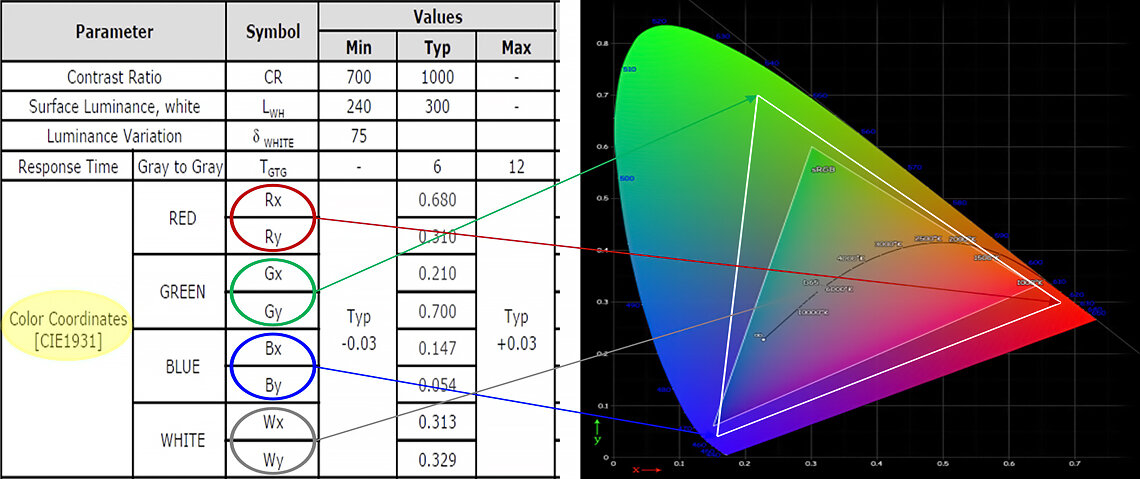Displays for medical devices
CT, MRI, Radiology & Co.
In the world of medicine, displays are everywhere. While displays for operating medical equipment must meet the same requirements as industrial displays, the focus in imaging procedures such as CT, MRI and radiology is on the optical qualities of a display.
Monitors qualified for medical use are used in the operating room, in reporting and in diagnosis. Key components for this are TFT displays. They must have special properties in terms of optics. The monitor electronics take care of the electrical adaptation to the system. It also supports with the scaling of the image, if necessary, the control of the backlight and linearization according to DICOM.
Criteria are e.g.
- Large reading angle
- Wide color gamut
- High contrast
- Calibratability of the medical monitor
- Long lifetime
The optical specification is the starting point for selection.
Contrast
A high contrast value is important for a picture with high dynamics, because increasing the picture brightness also leads to an increase in the black value. The LED backlight can either be mounted at the edges of the display ("edge backlight"), from where the light is distributed over a wide area via a diffuser, or mounted behind the complete panel ("direct" or "matrix" backlight).
In the latter case, the LEDs can be controlled individually or in groups depending on the image content ("Full Area Local Dimming") to lower the black level and thus increase the contrast.
Color space
The wide color gamut is achieved through the interaction of the LED backlight and the color filter of the LCD.
For an optimal display, the color space that can be represented by the display must be as wide as possible. The figure shows where the coordinates of the primary colors given in the table can be found in the color diagram. Only those colors that lie within the expanded triangle (shown in white) can be displayed.
Medical monitor
The manufacturer of a medical monitor builds electronics around the display. It receives the image signal via a standard interface and conditions it, for example by adjusting the gamma characteristic. In addition, the brightness is measured and readjusted over the life of the monitor and thus kept constant.
A front screen, which protects the sensitive polarizing filter and protects it from influences such as contamination and disinfection, is optically bonded in medical monitors. A touch function allows the size or position to be intuitively changed at the point of display.

Consulting and contact
Your wishlist is empty


